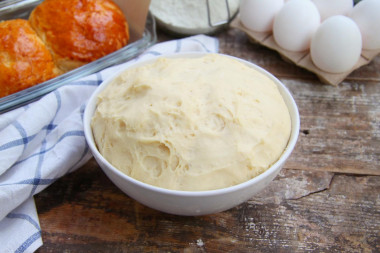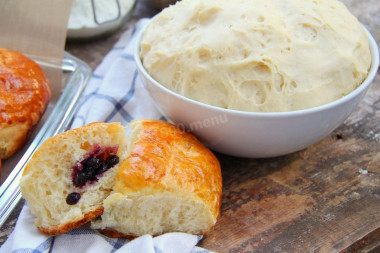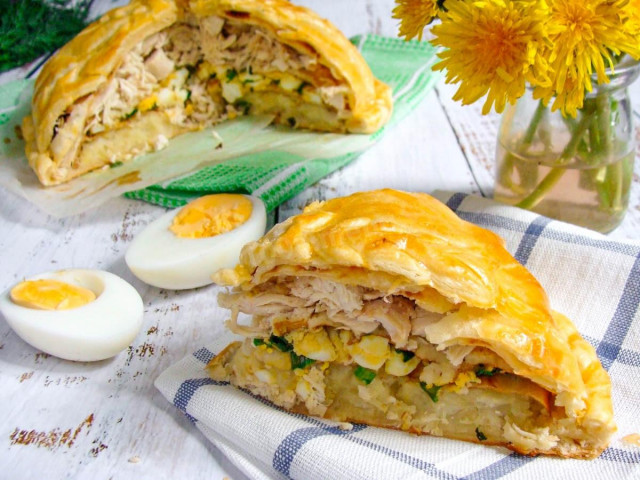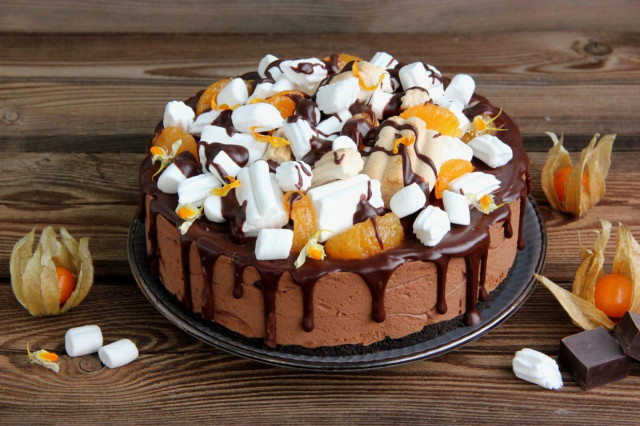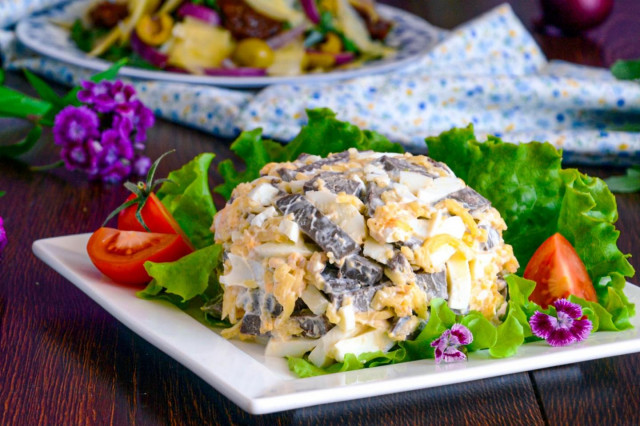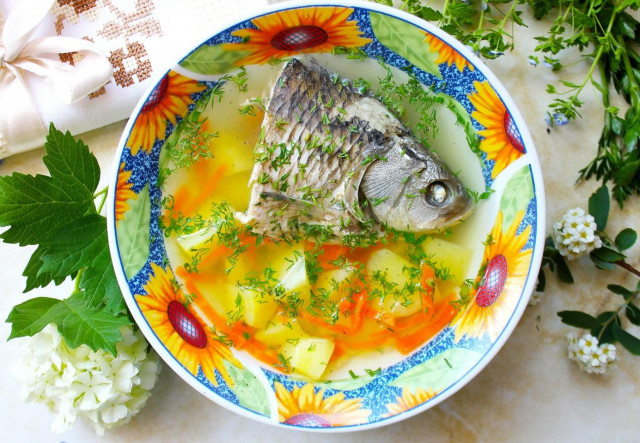Composition / ingredients
Step-by-step cooking
Step 1:
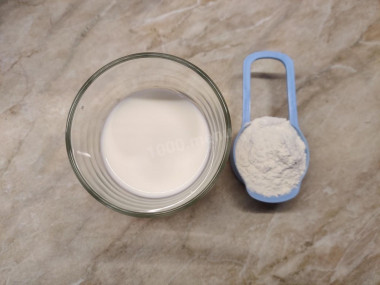
How to make yeast custard dough? Prepare the ingredients for the so-called bread or flour "welding ". Milk can be either at room temperature or from the refrigerator. For welding, this is not essential. But take the eggs and butter for the dough itself out of the refrigerator now. By the time the dough is kneaded, it is necessary that they have time to take room temperature.
Step 2:
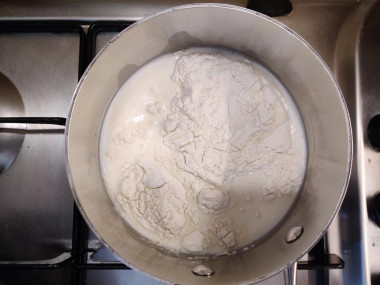
Pour the milk into a small saucepan or into a deep frying pan. Add the flour for brewing and put on medium heat. Stir the tea leaves all the time, breaking the lumps.
Step 3:
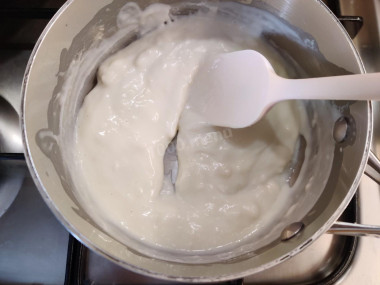
Cook the mixture until it holds the groove from the shoulder blade well. It took me 3 minutes. If there are a few lumps left, it's okay, the mixer will deal with them later. Cool the tea leaves to room temperature.
Step 4:
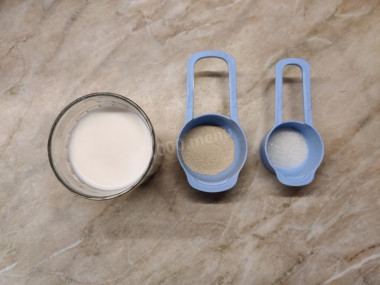
Meanwhile, let's prepare the sourdough. Measure out the right amount of ingredients. Preheat the milk to 38-40 ⁰C. It feels like "pleasantly warm, but not hot".
Step 5:

Add yeast and sugar to the milk and mix lightly. Leave the dough in a warm place for 15 minutes. I leave it in the microwave, in which I have just heated half a glass of ordinary water. It's humid and warm there, and these are ideal conditions for proofing.
Step 6:
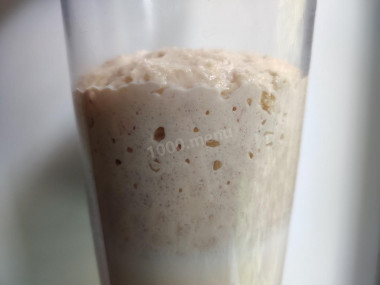
This is how a sponge suitable for work should look like after 15 minutes. If there is no good foam cap, then yeast is of poor quality. We'll have to take yeast from another batch and cook the sourdough again.
Step 7:
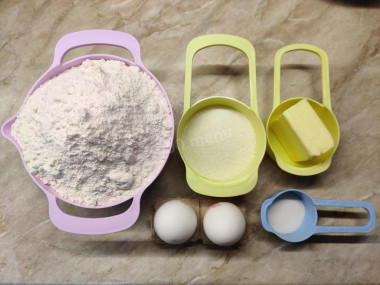
Let's start working with the ingredients for the dough. As I said, eggs and butter should already be at room temperature by this time.
Step 8:

Sift into the bowl of the planetary mixer! two-thirds! wheat flour of the highest grade. Add vanilla and plain sugar. You can add a pinch of salt for flavor.
Step 9:

Pour room temperature bread tea leaves, sourdough into a bowl and beat in the eggs.
Step 10:
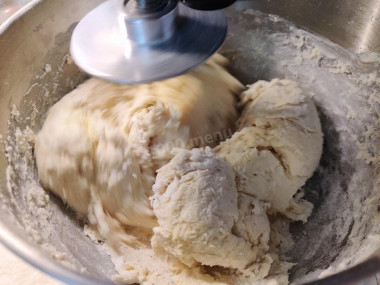
Knead the dough on a low speed mixer with a "Hook" attachment for 2 minutes.
Step 11:
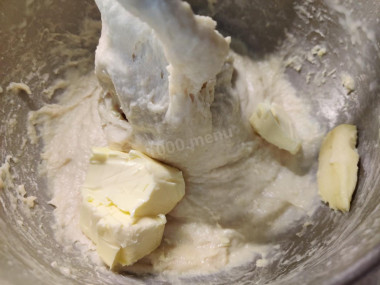
Then add the soft butter and knead the dough at low speed for another 10-13 minutes. Be guided by the consistency of the dough, assessing whether it is worth sifting more flour. This dough is slightly more sticky than traditional yeast. It does not lag well behind the walls of the bowl and does not gather into a smooth ball.
Step 12:

I ended up using not all the flour, but only 600 gr., you may also need a little more or a little less. As soon as the dough has stopped shamelessly sticking to your hands, but still sticks enough, finish entering flour :)
Step 13:
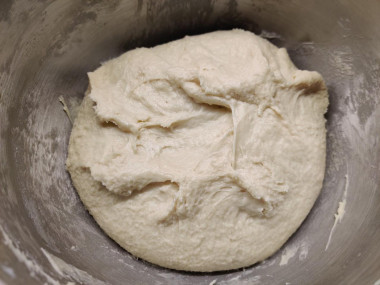
With a silicone spatula or spatula, collect the dough from the sides to the center. Leave the dough in a warm place, covering it with cling film, for 1-1.5 hours for proofing.
Step 14:

That's how well my dough came up in 1.5 hours.
Step 15:

Stickiness after proofing has become less. But I still dusted the work surface with flour. As a result, I got 18 large pies.
The pies from this dough turned out to be lush and rich, sweet and delicious. In general, it was a success. But no matter how hard I tried to convince myself that the custard dough tastes something different from the usual, I could not find a single difference. So the question is, was it worth bothering with this tea leaves at all? ...
I leave the choice up to you and wish you good luck!
Be prepared for the fact that you may need more or less flour than indicated in the recipe. Focus not on the amount of flour, but on the desired consistency of the dough. To avoid mistakes, read about flour and its properties!
Caloric content of the products possible in the composition of the dish
- Whole cow's milk - 68 kcal/100g
- Milk 3.5% fat content - 64 kcal/100g
- Milk 3.2% fat content - 60 kcal/100g
- Milk 1.5% fat content - 47 kcal/100g
- Concentrated milk 7.5% fat content - 140 kcal/100g
- Milk 2.5% fat content - 54 kcal/100g
- Chicken egg - 157 kcal/100g
- Egg white - 45 kcal/100g
- Egg powder - 542 kcal/100g
- Egg yolk - 352 kcal/100g
- Ostrich egg - 118 kcal/100g
- Granulated sugar - 398 kcal/100g
- Sugar - 398 kcal/100g
- Butter 82% - 734 kcal/100g
- Amateur unsalted butter - 709 kcal/100g
- Unsalted peasant butter - 661 kcal/100g
- Peasant salted butter - 652 kcal/100g
- Melted butter - 869 kcal/100g
- Wheat flour - 325 kcal/100g
- Vanilla sugar - 379 kcal/100g
- Dry yeast - 410 kcal/100g


